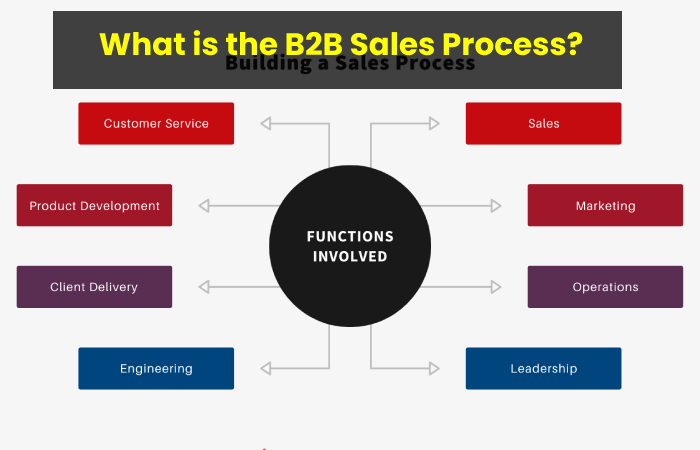Business-to-Business Sales (B2B) labels a relationship, situation, or marketplace between one business entity and another.
Table of Contents
What are B2B Sales?
The company’s owner, or supplier, provides consumables that benefit another business. It applies to furniture, outfits, and workplace supplies. They follow a similar process to B2C businesses. However, the amount and the ability to purchase are different. For example, an employee will acquire 50 ink cartridges instead of one and get permission from a boss or decision-maker before making the purchase. One business specializing in B2B transactions is Lyreco, a significant supplier of office and equipment supplies.
Common examples of B2B sales include:
- Organizations that provide professional services (for example, market research) to companies
Companies that provide digital / software services (e.g., CRM) to companies. - The Companies that produce/distribute raw materials to manufacturing companies.
- B2B sale mention a sale model or category of deals in which one company sells its products or services to another company.
- Because B2B sales typically involve higher prices, more complex processes, and multiple touchpoints across various channels.
TO GENERATE REVENUE, the B2B companies need to maintain highly trained B2B sale professionals.
What is the B2B Sales Process?

The B2B selling is a complex process that requires a well-designed and executed B2B sale strategy to succeed. Follow a different approach and use various sales techniques for multiple buyer personas and sales situations. However, the exact quantity and terms of the stages in your sales process will depend on your industry, company, and sales organization. Nonetheless, the B2B sale sequence is typically a 5- to the 8-stage salescycle.
Here’s an example 7-stage B2B sale cycle:
- Preparation / Research
- Prospecting
- Needs assessment
- Presentation/sales pitch
- Negotiation / Handling of objections
- Closing
- Follow up
B2B Sales Tips
There are some tips to improve your B2B sales performance:
- Personalize customer communications. Use technology to help personalize on a grand scale.
- And also, never skimp on ongoing salesperson training. B2B buyers are savvy – they prefer to hire professionals who demonstrate experience and empathy.
- And also, build a genuine relationship through active listening, critical thinking, and asking the right questions. Opt for omnichannel reach (mobile, social, email, events, sales calls, etc.)
- Consider establishing dedicated sales operations and a sales enablement team.
- Go beyond CRM and marketing automation. Instead, embrace new technologies like sales engagement platforms. Then, use the data to help you make smarter decisions and guidance.
- Encourage, monitor, and display positive customer feedback. Cabinet customer success stories and incorporate case studies into your sales playbook.
- However, they found complete strategic and tactical alignment crossways all customer service units, after marketing and sales to customer success.

